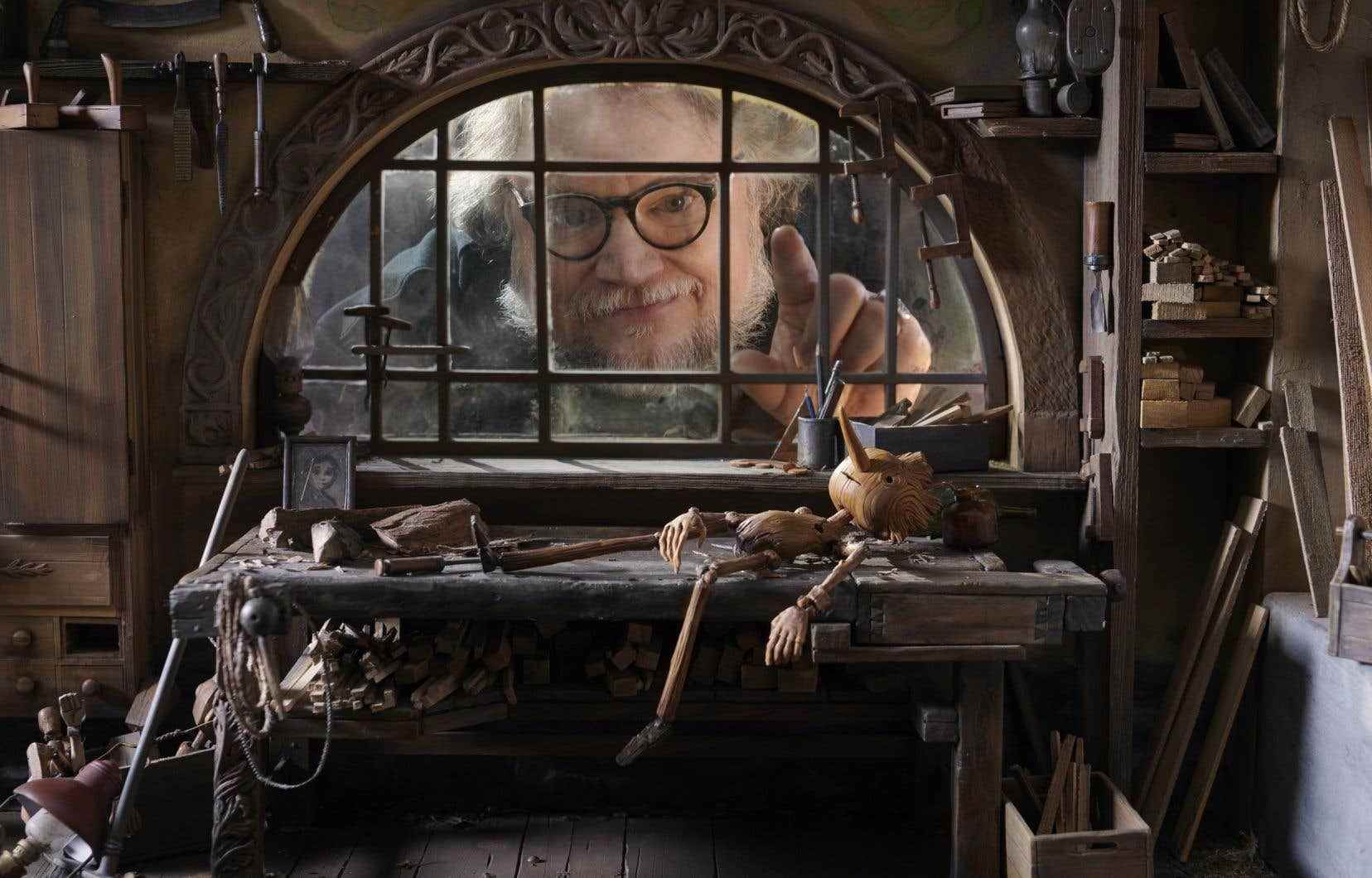When director Guillermo del Toro signed on 15 years ago to make a dark take on the famous tale Pinocchiohe decided to place the puppets and their creator in the fascist universe of the 1930s.
The characters of the old wood sculptor Geppetto and his exuberant slender-nosed puppet, Pinocchio, taken from an 1883 Italian novel and popularized by Disney, thus find themselves propelled into Mussolini’s Italy of military salutes, strict conformity and violent machismo in the animated film which will be released on Netflix on December 9.
” I wanted [situer le film] at a time when behaving like a puppet was a good thing, ”explained to Agence France-Presse Guillermo del Toro this weekend on the red carpet of the American Film Institute festival in Los Angeles.
“I wanted Pinocchio to disobey,” added the Mexican director. ” That [Pinocchio], which is the only puppet, does not act like a puppet. »
“I said to myself that given the theme, it was perfect”.
If the plot of fascism seems particularly relevant in view of current world politics, it was just as relevant when he conceived the project several years ago, underlined Guillermo del Toro.
“It concerns me because it is something that humanity seems to be returning to,” continued the filmmaker, who has already dealt with the leitmotif of fascism in his previous Gothic works, The Devil’s Spine (2001) and Pan’s Labyrinth (2006), which take place in Franco’s Spain.
Fascism is “always present in the background, or in the foreground”, according to Mr. del Toro.
“Kaleidoscopic”
The director tried to sell his interpretation of Pinocchio to Hollywood studios and producers for years before Netflix finally bought the rights in 2018.
“I fought to make [ce film] half of my career,” he said.
The animated feature film stop-motion took more than 1000 days of filming.
the stop-motionknown for its difficulty, is one of the oldest techniques in cinema which consists of taking successive photos of inanimate objects to give them the illusion of movement.
For Guillermo del Toro, the use of computer-generated images, as is the case in the latest remake live-action Disney classics — was never an option.
“It was very smart in my opinion to stage a story about a puppet with puppets, and that the puppets think that they are not puppets”, detailed Mr. del Toro.
“It’s kind of a very beautiful kaleidoscopic telescoping.”
Maternal heritage
If the Oscar-winning filmmaker for his fantastic film The Shape of Water in 2018 has always been fascinated by animation, this is his first such achievement.
“In North America, animation is seen a bit more as a genre for kids,” noted Guillermo del Toro.
“One of the things that I think everyone is trying to change, not just us, is to say ‘animation is film, animation is acting. , animation is art,” he insisted.
the stop-motion allows “to explore particularly touching and deeply spiritual things”, but it is a “technique that is on the verge of extinction all the time”, noted Mr. del Toro. “There are only mad fanatics to bind to keep her alive.”
Whether Pinocchio interested in the relationship between father and son, Guillermo del Toro became fascinated by the mischievous wooden puppet as a child thanks to his mother, to whom he was extremely close.
“I used to collect Pinocchio related items…my mother and I saw it together when I was very young and she kept giving me Pinocchio all my life,” he recalled.
Her mother died last month, a day before the film’s international premiere in London.
